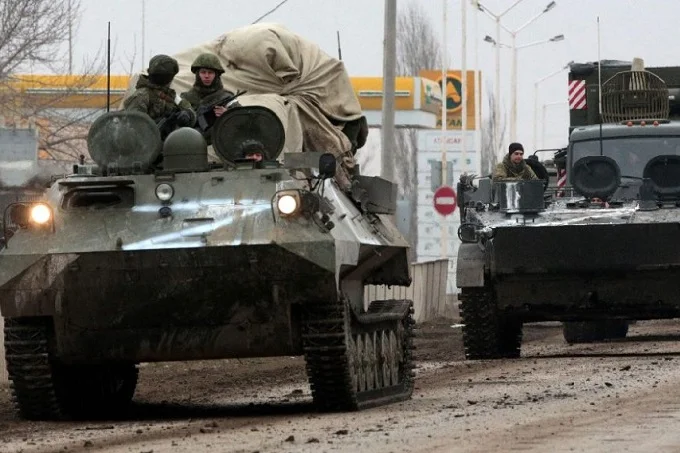They are visible everywhere in these “special military operations”: tanks and armored vehicles with the letters “V” and “Z” painted on them. Sometimes they drive by quickly, sometimes they are burned out in photos that Ukrainians then distribute.
What do those V and Z actually mean? Western experts do not fully agree, and various, sometimes wild theories are circulating on social media: it would be cardinal directions, it would be a provocation against Ukrainian President Volodimir Zelensky (whose initials are V and Z), and the letter Z would also be specifically are reserved for vehicles used in the attack on Kharkiv, in the east of the country.
German experts believe that the letters are the English transcriptions of the initials of Russian prepositions of two slogans. Z then comes from ‘Za pobyedu’, which translated means as much as ‘For the victory’. According to Russian sources, this also means that a military mission has been completed. To get the latest stories, install our app here.
‘In truth lies power’
The V does not mean ‘Victory’, but it is a kind of stamp for the slogan ‘In truth lies power’ for Russian soldiers. According to an article in the ‘Frankfurter Allgemeine Zeitung’, the latter would have a whole story attached to it.
According to the newspaper, Russian soldiers identify with that ‘V’ because of the cult film ‘Brat 2’ (‘Brother 2’) from 2000. ‘Brat 2’ is a kind of Russian variant of the American ‘Rambo’ films and a sequel to the hit film ‘Brat’ (1997). It is about a Russian veteran of the war in Chechnya. To get the latest stories, install our app here.
The V is said to refer to a specific scene from ‘Brat 2’ in which the hero – a young Russian named Danilla – has turned up in the United States, and an American asks what ‘strength’ is. Without waiting for the answer, he realizes that it is not in the money that the Americans overflow with him, but in ‘the truth’, according to German media. Even President Vladimir Putin is said to have used the quote popular in Russia.
Location
Other symbols include a triangle with two lines on either side, a circle with three dots in it, and a small triangle inside a larger triangle. Experts think the symbols could identify where a particular batch of vehicles is headed.
Professor Michael Clarke, former director of the defense think tank Rusi, told Sky News this week: “Often these symbols will be based on location – they will indicate where a unit is going. If they only identified the vehicles as Russian – Ukrainians still have some Russian equipment, which can be confusing – you could only use one symbol. The fact that they are different says more. They are probably signs indicating, for example, which units are going northeast or northwest of a district.” According to Clarke, such markings are normally only applied shortly before an attack, so that the enemy forces cannot copy them.
To get the latest stories, install our app here.
